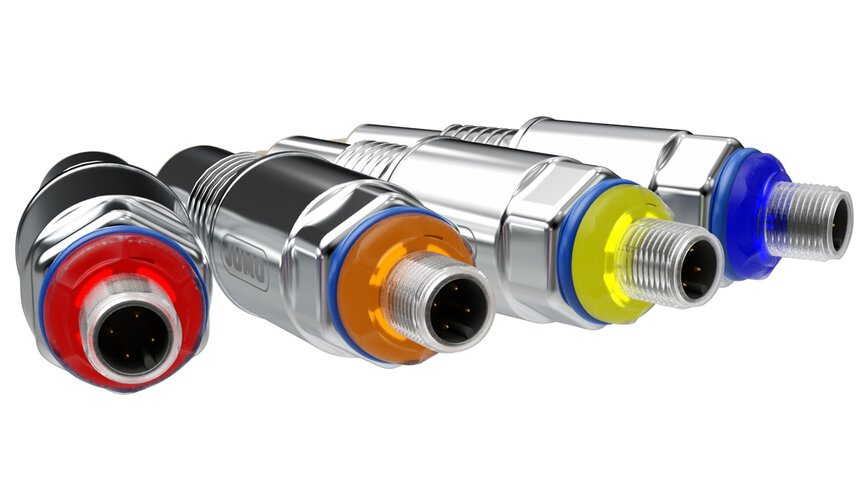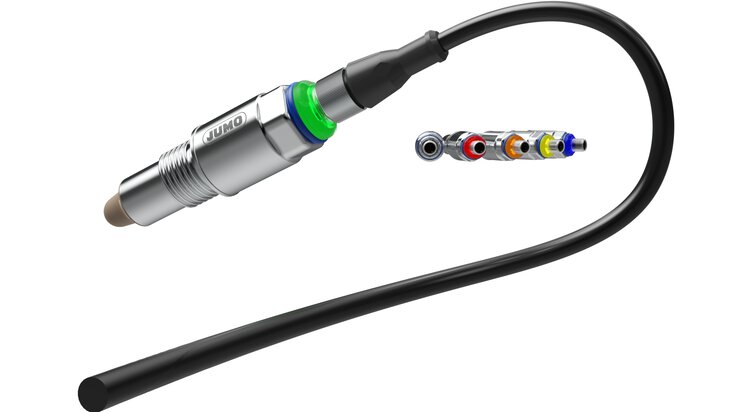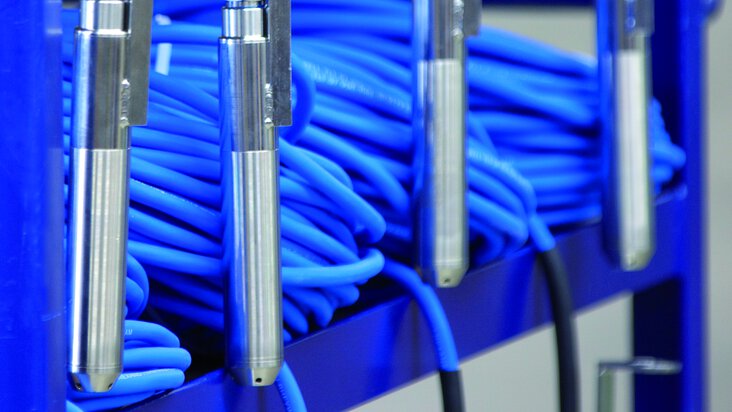

Capacitive limit level sensor ZELOS C01 – principle of operation, functions, application
Wondering how to choose the right level sensor for your industry? In our latest blog post, we take a closer look at the JUMO ZELOS C01 capacitive boundary level sensor. We present its operating principle, applications and functions. Moreover, we make a comparison with typical capacitive sensors available on the market. If you are interested in the topic of precision measurement and want to understand the differences between the available technologies, read on!
Capacitive limit level sensor - principle of operation
Capacitive level sensor works on the principle of detecting changes in the electric field. The key factor determining the effectiveness of this sensor is the dielectric property of the medium, also known as the permeability εr. In practice, this means that the sensor is more effective at detecting media with the right dielectric properties, that is, those that have the ability to conduct an electrical charge.
In short, the JUMO ZELOS C01 sensor measures changes in the electric field caused by the presence or absence of a medium with certain dielectric properties, allowing it to accurately detect the level of that medium.

Capacitive sensors are used to detect liquids solids and bulk materials in tanks and pipelines
Capacitive sensors for level measurement - applications
Capacitive liquid level sensors are widely used in various industries. Their main function is to signal the level of liquids and solids in tanks, pipelines and other containers. They are also used for detecting levels limits and monitor critical process conditions, such as the emptying of a hydraulic tank or unintentional overfilling of a container. These advanced sensors enable control of production processes, prevent liquid overflows or shortages, and protect equipment and installations from damage.
Capacitive level sensors are used in industries such as:
- Chemical industry: These sensors are used to control the level of various chemicals in tanks and containers.
- Food industry: They can help manage the levels of liquids, such as milk, wine or juice, and solids and bulk materials, such as grains.
- Oil and gas industry: A capacitance sensor can measure the level of oil in tanks, as well as deal with the harsh conditions that often occur in this industry.
- Water treatment plants: Capacitive level sensors help manage water and wastewater levels in various parts of the treatment process.
- Pharmaceutical industry: They are used to control the levels of various substances in pharmaceutical production processes.
- Agriculture: They are used to monitor feed levels in silos.
- Plastics industry: The level of plastic pellets in hoppers is monitored using these sensors.

One application of capacitive level sensors is to measure grain levels in silos
Comparison of capacitive level beacons for boundary level measurement
In industries where precision is crucial, choosing the right level sensor is essential. In this context, the JUMO ZELOS C01 presents itself as a modern alternative to traditional capacitive level sensors. Compared to classic solutions, the ZELOS C01 offers, among other things, an auto-calibration function, foam detection, and is resistant to high pressures (up to 60 bar) and temperatures (up to 200°C).
It works on the principle of detecting changes in the electric field, which makes it precise in detecting level changes in conductive media. Although the comparison presented in the table is general and may vary depending on the particular manufacturer and model, we believe that for companies looking for modern and rugged sensors, the JUMO ZELOS C01 is an interesting proposition. At an average market price, it has many unique additional features.
Who are JUMO ZELOS C01 capacitive sensors for?
JUMO's ZELOS level sensor is designed for a variety of industries and applications, such as food, rail, pharmaceutical, among others, water treatment and shipbuilding, where precise level monitoring is required. This is the product for you if you are looking for a technologically advanced solution at an affordable price. List prices for capacitive sensors typically range from about 600 to 1,000, making the ZELOS attractive in terms of price, being in the middle of that range.
PEEK process connection
Also look out for this device if you need an extremely rugged process connection to withstand harsh environmental conditions. We are the only manufacturer to have the option of an end made of PEEK - a material that is resistant to aggressive chemicals, high temperatures and mechanical influences such as compression.
Automatic calibration
The ZELOS sensor is also distinguished by automatic calibration, which permanently compensates for the influence of external factors on the performance of the sensor as installed. As a result, it provides reliable and precise level measurements.
In addition, it is waterproof and completely sealed during the process, providing reliable protection against moisture and chemicals.
TEACH-IN learning function
An important feature of the ZELOS sensor is also the ability to simply learn the medium without the need for software. The "teach in" function allows the sensor to learn and adapt to a specific medium on its own, speeding up the installation and configuration process.

Pojemnościowy sygnalizator poziomu JUMO ZELOS C01 LS do pomiaru poziomu cieczy i stałych ciał w zbiorniku lub rurze pod ciśnieniem w temperaturze -40 do +200°C
- ${title}${badge}

